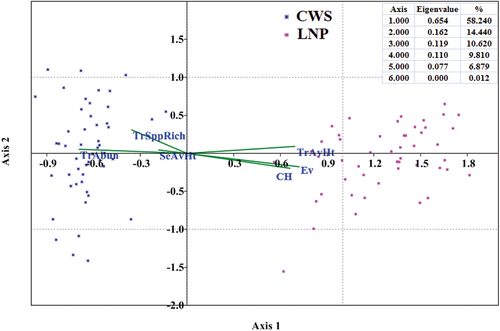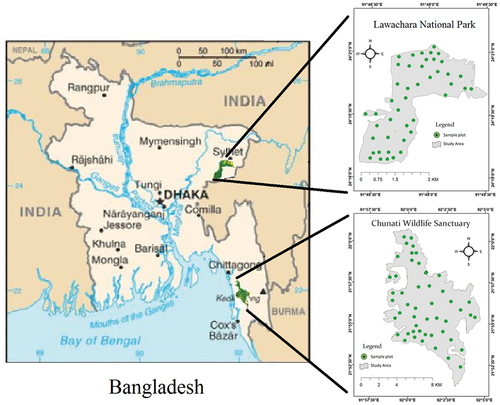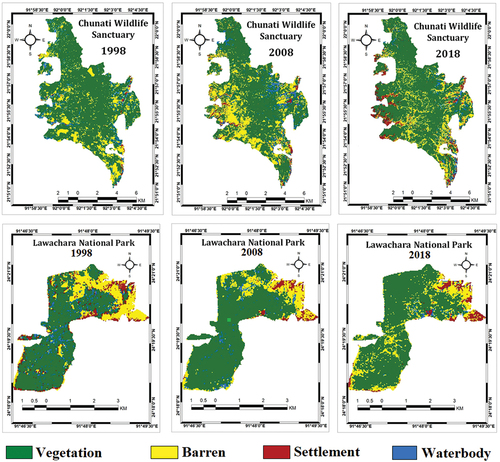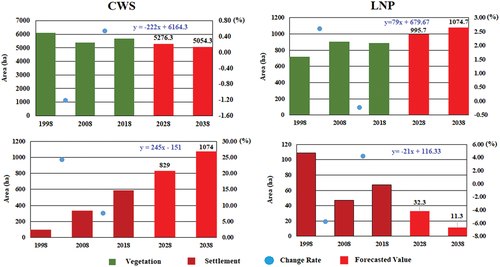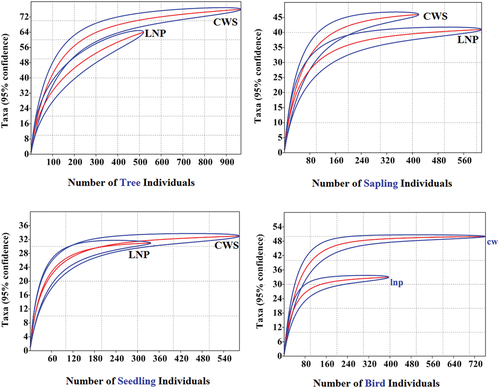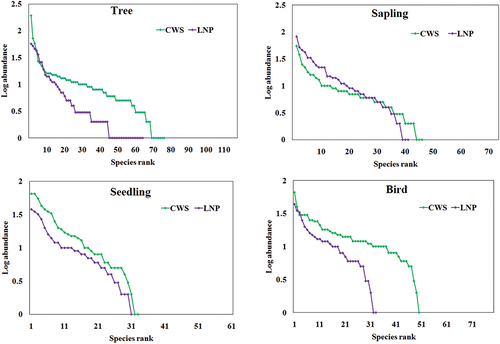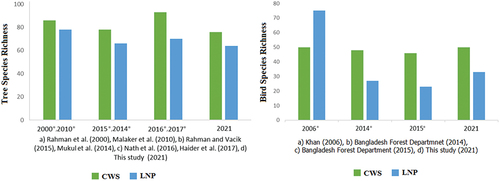Figures & data
Table 1. Rate of change in land-use classes from 1998 to 2018.
Table 2. Biodiversity composition of plant and bird species in CWS and LNP in Bangladesh.
Table 3. Biodiversity indices of plants and birds in CWS and LNP in Bangladesh.
Figure 6. Canonical correspondence analysis of a primary matrix of plant species traits with a second matrix of four environmental variables (CC- canopy coverage, CH- canopy height, EL- elevation, and DS- Disturbance score).
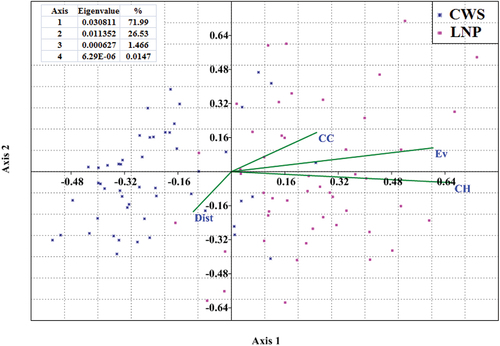
Table 4. Features of micro-habitat environmental variables in the studied areas.
Figure 7. Canonical correspondence analysis of a primary matrix of bird species abundance with a second matrix of six correlated habitat variables (CH- Canopy height, SeAvHt- Seedling average height, EV- Elevation, TrSppRich-Tree species richness, TrAvHt- Tree average height, TrAbun- Tree abundance).
